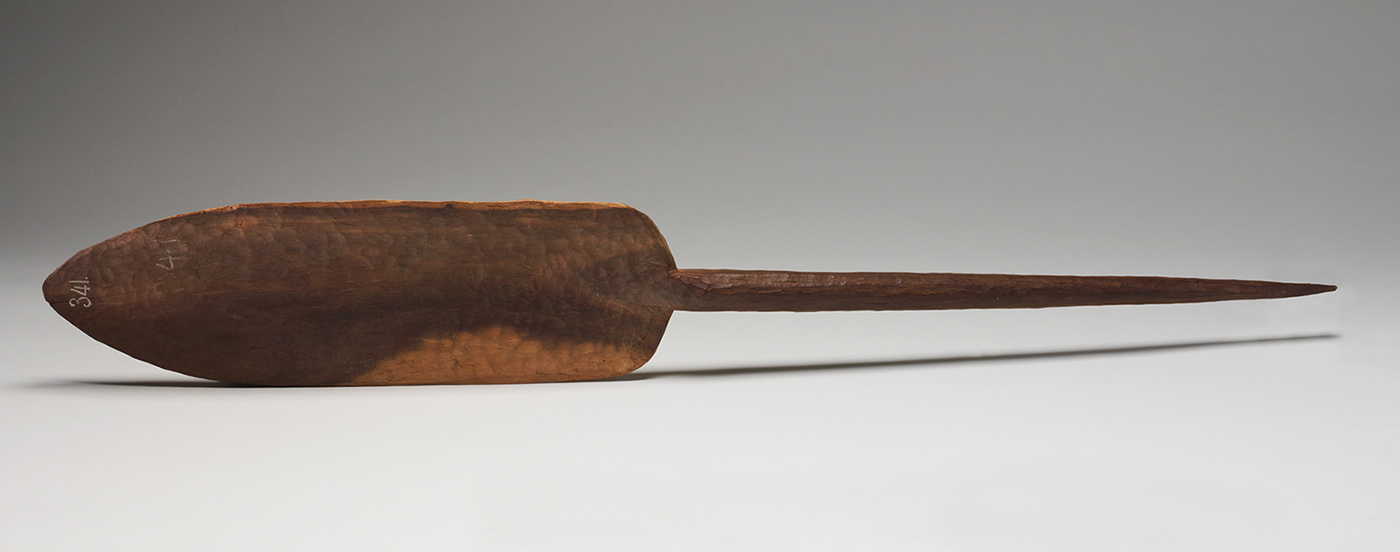Edmund Milne’s collection
In 1913 Edmund Milne was a senior railway official in Orange, a New South Wales town about 250 kilometres west of Sydney. He was also a collector of Aboriginal artefacts, and had built a significant and well-documented collection over 30 years. It was to be a good year for him – he collected 24 items in 1913, comprising wooden and stone implements as well as a photograph.
Milne also visited several historic sites in 1913. In July, Milne and a small group of associates embarked on a search for a site mentioned by explorer John Oxley. In 1817 Oxley and his party had found an Aboriginal burial site marked by two carved trees. Milne was interested in carved trees and, as the first mention of such trees in the literature, this site was of particular importance to him.
Armed with a copy of Oxley’s journal and advice from an Aboriginal informant, Jacky Narang, Milne’s party located the site on what is now Kiacatoo station, between Condobolin and Lake Cargelligo, about 200 kilometres west of Orange. In 1914 largely on Milne’s initiative, a monument was erected there.
Milne was not just a collector; he took an interest in Aboriginal cultures. He knew a number of Aboriginal people, from whom he collected artefacts. One of these people was Jack Shepherd, a Ngemba man who died at Bourke in 1916. Milne acquired 16 artefacts, including this poopra (wooden digging stick), dated between 1908 and 1914 and associated with Shepherd.
It is likely that Milne would have visited Shepherd when he went to Byrock and Bourke on railway business. Aboriginal people in small towns sold artefacts to visitors and, given that the ‘Shepherd artefacts’ in Milne’s collection exhibit no visible use-wear, it is likely Shepherd made them to sell rather than for his personal use.
At a time when there was much denigration of Aboriginal people and culture, Milne proclaimed a contrary opinion. In a 1911 lecture Milne espoused the view that ‘the Australian aborigine was not the most degraded and lowest form of the human race’. Milne described Aboriginal people as ‘no worse or no lower than our own forefathers’.
Milne had a broad understanding of Aboriginal cultures and a reputation as an amateur ethnologist and gentleman scientist. Robert Etheridge junior, the Australian Museum’s director, sought Milne’s help with two of his books: on the enigmatic cylcons (ceremonial stones) published in 1916 and, two years later, on carved trees.
Milne contributed substantially to the latter, published the year after he died. His scientific work had earlier been recognised in 1914, when he was asked to deliver a paper on carved trees at the Sydney section of the British Association for the Advancement of Science congress.
Certainly in at least one regard, Milne was ahead of his time. Unlike almost all of his contemporaries, he recorded the names of Aboriginal people associated with several artefacts that he collected, many believed to be their makers. The National Museum of Australia is fortunate to have such a significant collection.
In our collection
Explore more first peoples
You may also like
